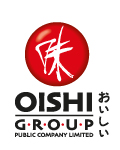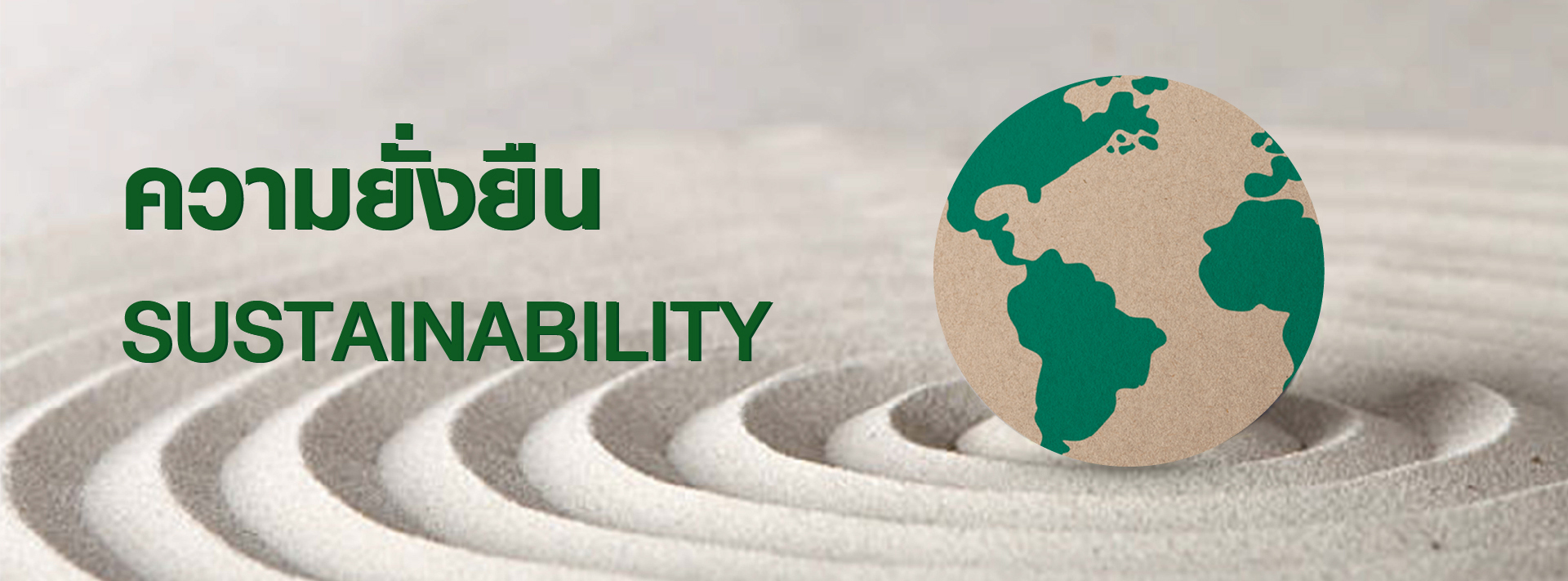Waste and Packaging Management
OISHI has supported the Sustainable Development Goals (SDGs) Goal 12: sustainable consumption and production plan
and encouraged recycling and reduction of solid waste in businesses, processes and consumers to meet sustainable waste
disposal goals of ThaiBev in its efforts towards making food waste dumped into landfills become zero or ‘Zero waste to
landfill’. OISHI has formulated a strategic framework for sustainable waste management, which are reducing, controlling and utilizing food waste under sustainability actions aimed at reducing, controlling and utilizing food waste. The Company has jointly driven the Sustainable Development Goals through various waste management projects and activities as follows:
1. Food Waste Management projects
• “Raks Arhaan” (Food Recue Project)
Operation: OISHI joined in supporting the “Raks Arhaan” (Food Rescue) project of the Scholars of Sustenance (SOS Thailand), a food rescue foundation, by using leftover food that can be eaten or cooked, such as meat, seafood, crab sticks, pork balls, vegetables, fruits and fried foods from 3 OISHI restaurants in 2021, consisting of SHABUSHI Shop, Central Ladprao Branch; SHABUSHI Shop, Samyan Mitrtown Branch; and OISHI EATERIUM, Samyan Mitrtown Branch, expanded to 24 restaurants in 2022, consisting of 16 branches of Shabushi, 6 branches of OISHI Buffet and 2 branches of Nikuya, in order to pass on food that is still of good quality and safety to the foundation, so that the foundation can continue to help other communities. OISHI’s Quality Assurance (QA) Department has also established a method for storing food for such donations to maintain quality, and provide training and knowledge to employees of each branch participating in the project.
Result: OISHI has been supporting the food rescue project since the end of 2020 and is preparing to
expand support to other branches in the future. The amount of food donated from October 2021
to September 2022 totaled 9,264.07 kilograms, or equal to 76,336 meals valued at 938,932.80 baht.
• #Kin Mod Klieng (Eat Up) Challenge
Operation: OISHI organizes the #Kin Mod Klieng Challenge campaign through 160 branches of Shabushi and 5 branches of Nikuya, totaling 165 branches nationwide, with the objective of campaigning for consumers to help reduce food waste, which is an environmental problem, and also helps reduce costs for the shop as well. The activity format is that the restaurant will invite customers to join the campaign in which customers can eat unlimited quantities as before, but take at proper portion. Hence they are considered the winners of the campaign. The winner will be rewarded with a 50 baht discount coupon for using the service next time.
Result: There are approximately 362,420 customers who joined the program to help reduce food waste from October 2021 to September 2022.
• Recycling Old Vegetable Oil from Cooking
Operation: The Company sells old vegetable oils obtained from cooking at OISHI restaurants and from
OISHI Food Service plant to contracted companies that are certified and are effective in handling used
oils, which will be than taken into the recycling process into biodiesel or animal feed, etc. All recycled oil will be used properly for its intended purpose in order to comply with legal requirements and corporate purposes.
Result: This project can transfer approximately 160,236 kilograms of old vegetable oil that has been used between October 2021 and September 2022 into the recycling process that can be converted to
other uses.
• “Mai Kin Bork Aow Ork Hai” Campaign (“Tell Us What You Don’t Want”)
Operation: The campaign launched on July 1, 2022 at OISHI Ramen, Kakashi and OISHI Biztoro with the objective to raise customers’ awareness on food waste from their dishes. Customers can inform the staffs to omit some ingredients from the dish, so those ingredients don’t become food waste afterwards.
Result: Though the volume is not significant, the project raises awareness effectively since all customers has been asked and contemplated seriously on this issue.
• The Use of Tea Waste
Operation: OISHI Beverage Factory can supply the tea waste to accredited contracting companies
and has an efficient management of the tea waste and its utilization.
Result: OISHI Beverage Factory, Wang Muang District, Saraburi Province and OISHI Beverage Factory, Navanakorn Industrial Estate, Pathumthani Province forwarded 4,380,940 kilograms of tea waste to the contracting company to make fuel.
2. Packaging Management
In the selection of packaging materials, OISHI places importance on reducing resource consumption and using environmentally friendly materials. The Company also takes into account the reuse or recycle of packaging materials after consumption in every business group such as:
Food Business: OISHI restaurant and OISHI EATO ready-to-cook and ready-to-eat food improve the use of packaging by following the four dimensions of packaging sustainability guidelines, which are:
• Use plastic packaging that can be recycled.
• Reduce plastic use through packaging design.
• Use packaging made from biodegradable materials.
• Use packaging that customers can reuse.
In 2022, OISHI Group’s restaurants and OISHI EATO ready-to-cook and ready-to-eat food products
can achieve the goal, and from such guidelines, OISHI restaurants can reduce the use of plastics by 7.59 tons from the following actions:
• Use packaging that can be recycled, such as sponge-ball bags with the ‘Recycle’ symbol on the packaging to communicate to consumers. This bag is provided for high-volume delivery order since the bag can take the weight better than plastic bag.
• Raise consumers’ awareness in reusing plastic bag, instead of one-time use, by communicate via “This bag can be reused” message printed on plastic bag.
• Use only garbage bags that made from recycled materials.
• Campaign to stop using straws. OISHI cooperates with the government in implementing the policy to eliminate the use of 4 types of single-use plastics, namely Styrofoam boxes, plastic bags, plastic cups and plastic straws by 2022. The company has organized a campaign to reduce the use of straws to make customers aware and participate in environmental conservation by creating public relations signs asking for cooperation in refraining from using straws installed at straw distribution points in 170 OISHI buffet restaurants nationwide, starting from July 2022 onwards. This creates awareness among customers about the importance of the environment and how to easily play a part in conserving it.
• Reuse used plastic bags as garbage bags. OISHI has foreseen that the plastic bags that suppliers use to pack raw materials in large quantities to restaurants are plastic bags of a size and thickness that can be used as a replacement for garbage bags. The company therefore initiated a project to change the plastic bags containing those raw materials into garbage bags since May 2022. Since delivering ingredients to restaurants requires cleanliness, safety and quality standards, OISHI has to use plastic bags to pack ingredients during transportation from different suppliers. By selecting bags that are still in good condition to be used as garbage bags in restaurants instead of discarding them.
Since the start of the project, OISHI restaurants have reduced the amount of garbage bags purchased for both sizes (25x28 inches and 36x45 inches) down to an average of 16 packs per branch per month, which is a downward trend from the period before the start of the project that used an average of 19 packs per branch per month.
As for ready-to-cook and ready-to-eat food products, OISHI EATO adheres to sustainable packaging practices to reduce plastic consumption through the following actions:
- Decrease the thickness of the packaging to reduce the amount of plastic used, but still maintain the quality of food delivery to consumers by reducing the thickness of:
o 2-layer rice bowl set from 42 grams to 38.3 grams
o Bento set by reducing the thickness of the tray from 0.7 mm. to 0.6 mm. and the lid from 0.5 mm. to 0.3 mm.
In addition, the SKU management of the rice bowl set has been newly separated to suit the food characteristics.
- Changed plastic bags and trays for salmon nigiri from PS Polystyrene to PP Polypropylene, which can be reused over and over again and can be 100% recyclable.
- Change the method of attaching clear scotch tape to new packaging so that customers can open it easily but still maintain the quality of the product. This method can reduce the use of scotch tape as well. The scotch tape used is made from cellulose film, which is naturally biodegradable and environmentally friendly.
- Reducing the layer thickness of packaging film of OISHI EATO ready-to-cook and ready-to-eat foods. The frozen ramen line can reduce the thickness of the LLDPE film layer by 100%.
- The packaging of OISHI EATO refrigerated sandwich group uses a single plastic film (mono-material) to be able to be decomposed without having to go through the film separation process. It helps reduce the process and energy consumption in film separation.
Beverage Business: In addition to striving to develop quality green tea beverages, OISHI continues to develop environmentally friendly packaging, especially to reduce the amount of plastics by doing the following:
• Reducing the Weight of the Preform: Plastic bottles are the main packaging of OISHI green tea, with preforms as raw materials for blow molding, divided into 2 sizes:
(1) Preform weighing 17 grams, used to blow plastic bottles of 350 ml. and 380 ml.
(2) Preform weighing 18.5 grams, used to blow a 500 ml. plastic bottles
Each year, OISHI uses more than 567 million preforms per year. It consists of preforms weighing
17 grams, approximately 317 million pieces per year, or approximately 55%, and preforms weighing 18.5 grams, approximately 188 million pieces per year, or approximately 33% of the total volume of preforms. Therefore, preform weight reduction is an alternative to plastic reduction.
In 2022, after the trial project of reducing the weight of preform from 17 grams to 15.89 grams in the first quarter of 2022, the volume of lower-weight preform was 240 million pieces, which compared to its original weight, OISHI decreased the plastic usage approximately 266,636 kilograms.
As for the preform weighing 18.5 grams, which is used in blowing into 500 ml plastic bottles for packaging green tea products with aseptic systems, the company is currently able to reduce the amount of plastic used by about 86,516 kilograms, from approximately 4.7 million kilograms of plastic is required when using the previous weight of the preform. This project has been completed and the preform weighing 18.16 grams has been used since June 2021 until now.
• Develop Labels from PET Materials: In 2021, OISHI has studied and experimented with PET labels in the CAF1 production line for OISHI Green Tea Genmai Flavor, 500 ml., instead of labels made from PVC plastic, since PET plastic has a more environmentally friendly production process than PVC and PET plastic can also be recycled. But in terms of use, PET plastic has limitations because of its high shrinkage, suitable for curved bottles with different sizes between the body and the neck of the bottle. From the studies, it can be concluded that PET plastic labels can be used with machines without problems and have good and consistent shrinkage. The PET plastic labels are available in May 2022 starting from OISHI factory in Navanakorn Industrial Estate, Pathum Thani Province, for CAF1 and 3 production lines, and OISHI factory in Wang Muang District, Saraburi Province, for CAF2 and 4 production line respectively. The company is also in the process of expanding its PET labeling capabilities to other flavored beverages. The goal is to completely change the use of labels to PET plastic within the fourth quarter of 2024.
- There are quite a variety of OISHI Green Tea products that use paper packaging such as UHT box type green tea products, corrugated boxes used to transport green tea units, as well as other packaging made of paper used in the factory. The company focuses and is aware of the selection of packaging materials from partners in terms of using recycled paper as a component in the production of packaging. This also includes the selection of partners that have been certified by the FSC, which is the global forest management organization that promotes environmentally friendly, properly managed forests, does not harm the environment, and replaces resources by reforestation of used wood. This ensures that OISHI's suppliers are also aware of environmental issues from the sourcing of raw materials to the end of the production process, and also contributes to reforestation back to nature.
- Recycling of aluminum cans (Aluminum Loop) In 2022, OISHI Trading Co., Ltd. has joined forces with Thai Beverage Can Co., Ltd. in a project called “Can to Can Journey” The Endless Journey of Aluminum Cans to bring cans of OISHI Chakulza beverages to be 100% reused. The amount of aluminum cans of OISHI Chakulza reached 874,538 kilograms during January - July 2022. The production of aluminum cans from recycled cans can reduce energy in the can production process by up to 95% and reduce CO2 emissions compared to the production of regular aluminum cans. Nowadays, OISHI Chakulza cans are marked with the Aluminum Loop logo due to renewable aluminum.
From various efforts in the field of packaging, OISHI Group Public Company Limited received a pin of honor and a certificate of leadership for sustainable responsibility from Mr. Varawut Silpa-archa, Minister of Natural Resources and Environment, as OISHI Trading Co., Ltd., the producer of OISHI Green Tea beverages, participated in the “PackBack: Taking Back the Packaging for Sustainable Days” project at the ceremony at the Queen Sirikit National Convention Center on September 29, 2022. The concept of Extended Producer Responsibility or EPR is quite important in driving the circular economy according to the BCG (Bio Economy, Circular Economy, Green Economy) economic model, which the government has announced as a national agenda to drive Thailand towards a low-carbon society in accordance with the goal of carbon neutrality, and Thailand's goal of net zero greenhouse gas emissions. The EPR concept guides packaging management throughout the product life cycle with the principle of extending the responsibility of producers to different stages of the packaging life cycle, to achieve packaging recycling after consumption. This will reduce negative impacts on the environment and ensure sustainable development. If manufacturers can accept returns of goods or products back from consumers or buyers, it will be another key to enable Thailand to realize the Circular Economy under the coordination and integration of joint operations from all sectors.
In order to achieve the goal of zero food waste to landfill, OISHI has continuously planned to achieve a goal of no more than 2% of food waste to landfill by 2022. OISHI food business can be managed efficiently. As a result, only 0.49% of food waste was sent to landfill, which is considered to be above the target.
Table showing the amount of food waste
| October 2021 - September 2022 | Production volume (kg.) | Amount of food waste (kg.) | Amount of food waste that have been utilized (kg.) | Amount of food waste sent to landfill (kg.) | As a percentage of food waste sent to landfill |
|---|---|---|---|---|---|
| OISHI Food Service Factory (Central Kitchen), Ban Bueng District, Chonburi Province | 11,448,848.00 | 437,846.00 | 437,846.00 | 0.00 | 0.00% |
| All restaurants in the OISHI chain | 16,929,808.29 | 247,623.60 | 165,066.96 | 82,556.67 | 0.49%* |
* Amount of food waste that have been utilized is included the volume of restaurants’ used oil which was recycled effectively.


